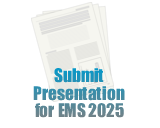 The National Guide for Sample Collection and Preservation: Strengthening Reliable Environmental Data Quality in Brazil
The National Guide for Sample Collection and Preservation: Strengthening Reliable Environmental Data Quality in BrazilEnsuring Reliable Data
Oral Presentation
Prepared by R. Silva1, M. Vieira2, M. Sato1, M. Lamparelli1
1 - CETESB - Environmental Company of the State of São Paulo, Avenida Professor Frederico Herman Júnior, 345, São Paulo, São Paulo, 05459-900, Brazil
2 - ANA - National Water and Sanitation Agency, Setor Policial, Área 5, Quadra 3, Brasília, DF, 70610-200, Brazil
Contact Information: [email protected]; +551131333505
ABSTRACT
Reliable environmental data relies on standardized methodologies for sample collection. The National Guide for Sample Collection and Preservation: Water, Sediment, Aquatic Communities, and Liquid Effluents, now in its second edition, serves as a comprehensive resource for ensuring consistency, accuracy, and traceability in field sampling practices. Developed in partnership between the National Water and Sanitation Agency (ANA) and CETESB (Environmental Company of the State of São Paulo), it stands as a cornerstone of national environmental monitoring efforts.The guide underpins the National Surface Water Quality Monitoring Network, coordinated by ANA, encompassing over 3121 sampling points across Brazil. Covering a wide range of topics essential for reliable environmental data, it provides robust protocols for quality assurance and quality control (QA/QC), methodologies tailored to various environmental matrices such as water, sediment, aquatic communities, and effluents, as well as detailed procedures for emergency scenarios and beach sand quality assessments. Additionally, it offers practical guidance on documentation, chain-of-custody procedures, and the handling of emerging contaminants, ensuring consistency and traceability in monitoring practices.Aligned with ANA Resolution No. 207/2024, the guide is recognized as a technical reference for national data harmonization, establishing standardized practices across monitoring programs and solidifying its role as a key tool for generating reliable and comparable environmental data in Brazil.Since its release, the guide has been widely adopted, with more than 300 professionals trained and its methodologies consistently applied across Brazil’s national monitoring programs. By addressing Brazil’s diverse environmental challenges and fostering the production of reliable data, the guide exemplifies how standardized methodologies can strengthen environmental management at local, national, and international levels.

